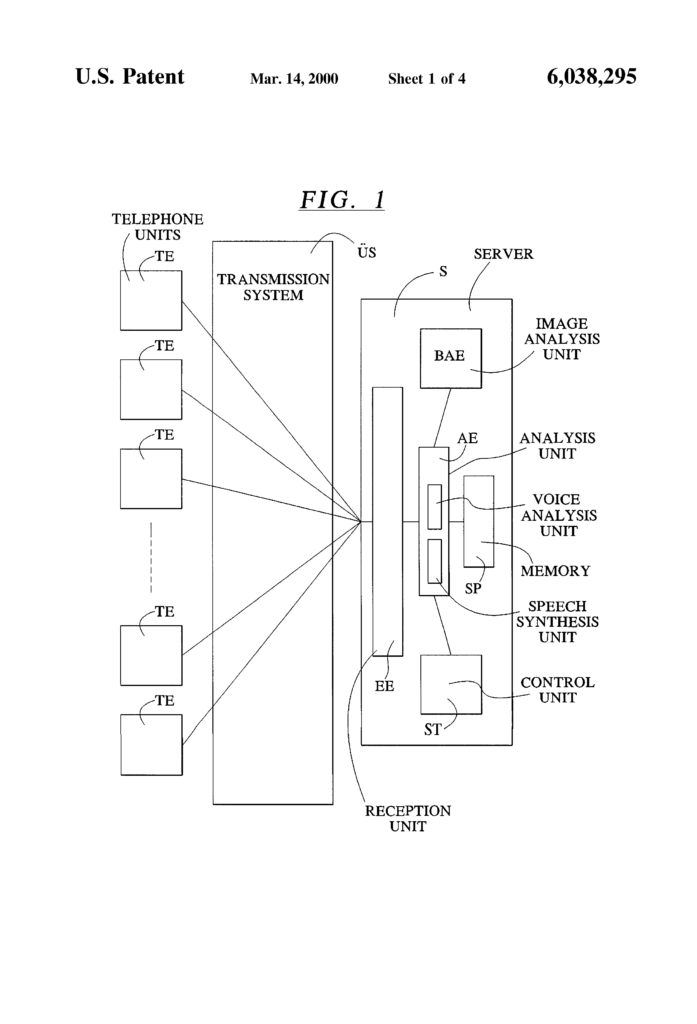In re: TLI Communications LLC Patent Litigation, Federal Circuit 2016 (Software Patents)
 TLI Communications hold U.S. Patent No. 6,038,295 relating to a method and system for taking, transmitting, and organizing digital images.
TLI Communications hold U.S. Patent No. 6,038,295 relating to a method and system for taking, transmitting, and organizing digital images.
The patent relates generally to an apparatus for recording of a digital image, communicating the digital image from the recording device to a storage device, and to administering the digital image in the storage device. The specification notes that a “wide variety of data types” can be transmitted, including audio and image stills. Moreover, cellular telephones may be utilized for image transmissions. When a large number of digital images are recorded and are to be archived in a central computer unit, then the organization of the data base becomes a problem, according to the patent. In particular, the problems of locating the data of an image data file increase as the number of images to be archived increases. The invention sought to solve this problem by providing for recording, administration and archiving of digital images simply, fast and in such way that the information therefore may be easily tracked. More specifically, the patent teaches manually or automatically assigning “classification data,” such as a date or timestamp, to digital images and sending those images to a server. The server then extracts the classification data and stores the digital images, taking into consideration the classification information.
Claim 17 is representative:
17. A method for recording and administering digital images, comprising the steps of:
recording images using a digital pick up unit in a telephone unit,
storing the images recorded by the digital pick up unit in a digital form as digital images,
transmitting data including at least the digital images and classification information to a server, wherein said classification information is prescribable by a user of the telephone unit for allocation to the digital images,
receiving the data by the server,
extracting classification information which characterizes the digital images from the received data, and
storing the digital images in the server, said step of storing taking into consideration the classification information.
The Federal Circuit noted that the Supreme Court has long held that 35 U.S.C. § 101 contains an important implicit exception: Laws of nature, natural phenomena, and abstract ideas are not patentable.” Ass’n for Molecular Pathology v. Myriad Genetics, Inc., 133 S. Ct. 2107, 2116 (2013) (quoting Mayo Collaborative Servs. v. Prometheus Labs., Inc., 132 S. Ct. 1289, 1293 (2012)). Under the now familiar two-part test described by the Supreme Court in Alice, we must first determine whether the claims at issue are directed to a patent-ineligible concept, such as an abstract idea. Alice Corp. Pty. Ltd. v. CLS Bank Int’l. If so, we must then “consider the elements of each claim both individually and ‘as an ordered combination’ to determine whether the additional elements ‘transform the nature of the claim’ into a patent-eligible application.” Id. (quoting Mayo, 132 S. Ct. at 1298, 1297).
The Federal Circuit noted that they recently clarified that a relevant inquiry at step one is “to ask whether the claims are directed to an improvement to computer functionality versus being directed to an abstract idea.” See Enfish, LLC v. Microsoft Corp. They contrasted claims “directed to an improvement in the functioning of a computer” with claims “simply adding conventional computer components to well-known business practices,” or claims reciting “use of an abstract mathematical formula on any general purpose computer,” or “a purely conventional computer implementation of a mathematical formula,” or “generalized steps to be performed on a computer using conventional computer activity.”
The Federal Circuit observed that the specification does not describe a new telephone, a new server, or a new physical combination of the two. The specification fails to provide any technical details for the tangible components, but instead predominately describes the system and methods in purely functional terms. For example, the telephone unit of the claims is described as having the standard features of a telephone unit, with the addition of a digital image pick up unit for recording images,” that “operates as a digital photo camera of the type which is known. As a practice tip, it is probably a bad idea to point out in a specification that any of your components are known. All inventions include some old components. It is probably also a good idea to provide more hardware detail when you have hardware.
Though the Federal Circuit wasn’t impressed with these claims, they gave hints as to claims that would be patentable under 35 U.S.C. § 101. After noting that these claims are not directed to a solution to a technical problem, as was the case in Diamond v. Diehr, they noted that these claims also do not attempt to solve “a challenge particular to the Internet.” DDR Holdings, LLC v. Hotels.com.
The Federal Circuit concluded that the claims are simply directed to the abstract idea of classifying and storing digital images in an organized manner.
Turning to the second step in the Mayo/Alice analysis, the Federal Circuit found that the claims fail to recite any elements that individually or as an ordered combination transform the abstract idea of classifying and storing digital images in an organized manner into a patent-eligible application of that idea. It is well-settled that mere recitation of concrete, tangible components is insufficient to confer patent eligibility to an otherwise abstract idea. Rather, the components must involve more than performance of “‘well understood, routine, conventional activit[ies]’ previously known to the industry.” Alice (quoting Mayo, 132 S.Ct. at 1294). The Federal Circuit agreed with the district court that the claims’ recitation of a “telephone unit,” a “server”, an “image analysis unit,” and a “control unit” failed to add an inventive concept sufficient to bring the abstract idea into the realm of patentability.